With the increasing popularity of bowfishing I thought I’d do a little tutorial for those new to the sport. I got hooked on bowfishing when I was a little kid shooting common carp during the spawn. There is just something about stalking up on a monster fish that’s splashing half-in and half-out of the water that gets your heart pumping! Bowfishing as with most things in life can be as simple or as complicated as you’d like, but in its simplest form grab any old bow with a cheap reel, an arrow with a barbed point and you’re good to go.
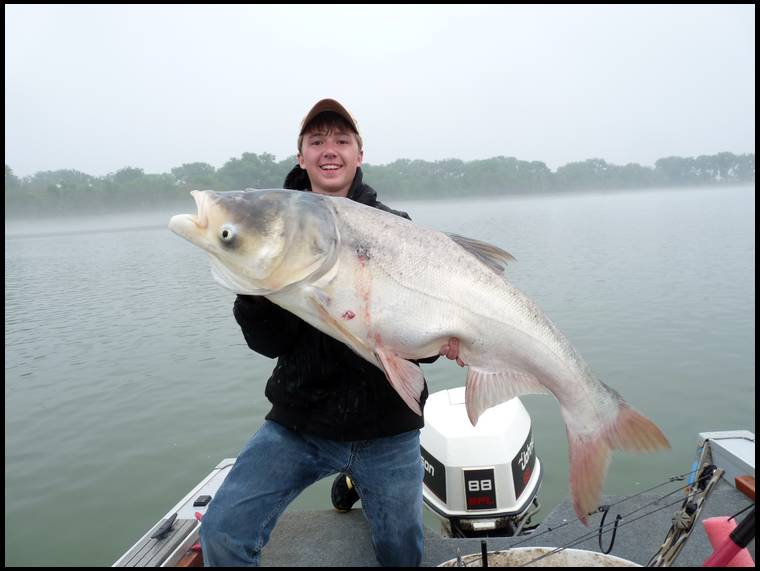
Safety
Before I get into the nuts and bolts I need to throw out the obligatory safety warning, and I do this because there are some unique considerations with bowfishing. The most obvious is that you’ve just tied an arrow onto a string which is attached to your bow and it’s about to be propelled at 200+ FPS. In the heat of the moment it’s easy for the new archer to forget about that string, allowing it to become tangled around something it shouldn’t, which never ends well. It’s extremely important to get into the habit of checking the string to make sure it’s feeding cleanly onto the reel without being wrapped around the bow/reel/hand/fingers. If the latter is the case one of two things will happen, whatever the string is wrapped around will get ripped, torn or burned (fingers). Or if that particular object has enough strength to halt the arrow mid flight and the string doesn’t break, the arrow will be sent directly back at the shooter, otherwise known as snap-back.
I had a buddy in college whose string got tangled sending the arrow right back through his upper lip; several stitches later he was back in the game but I assure you he paid better attention after that incident. For this reason I always try to wear sunglasses for eye protection while bowfishing, not to mention you’ll see a lot more fish with a good pair of polarized glasses. I’ve been careless and had the string wrapped around my hand that left a rope burn/scar that served as a reminder for the next five years or so. I don’t want to scare anyone away from the sport but like most things you need to pay attention to what you’re doing. And it’s easy for the new shooter (or old) to get too excited when you roll up on a pile of big 20lb spawing carp.
Another safety consideration, which may be somewhat obvious, is to wear an armguard. This is especially true if you’re a newer shooter who has a tendency to hit your forearm with the string, which can make for a long day on the water!
Bows
Almost any old bow will work just fine for bowfishing. In fact some of my older bows, which I wouldn’t even consider for any type of big game hunting, are my favorite bowfishing bows. One thing that those new to the sport may not understand, you don’t need to pull as much weight for bowfishing as you would with a typical hunting bow. While I shoot about 70 lbs on my hunting rig, my ideal weight for a bowfishing bow would be in the 40-50 lb range. Many times the shooting can be fast and furious and pulling a heavier bow all day can plain wear you out. But maybe more importantly when you’re shooting a heavier weight draw if something were to go wrong, I’d rather it happen under 45 lbs of force vs. 70! This advice would change if you’re gearing up for alligator or other thick skinned fish, but for many of the common bowfishing species 40-50 lbs is about perfect.
Reels
Bowfishing reels come in three basic flavors: manual, spincast and bottle retriever. For years (and still on my backup bows) I’ve shot the basic manual reel. They make two types, one which threads directly into the threaded female stabilizer hole on your riser and the other style gets taped directly onto the bow limbs. With a little practice, retrieving and re-spooling these manual types can be as fast as the more sophisticated types.
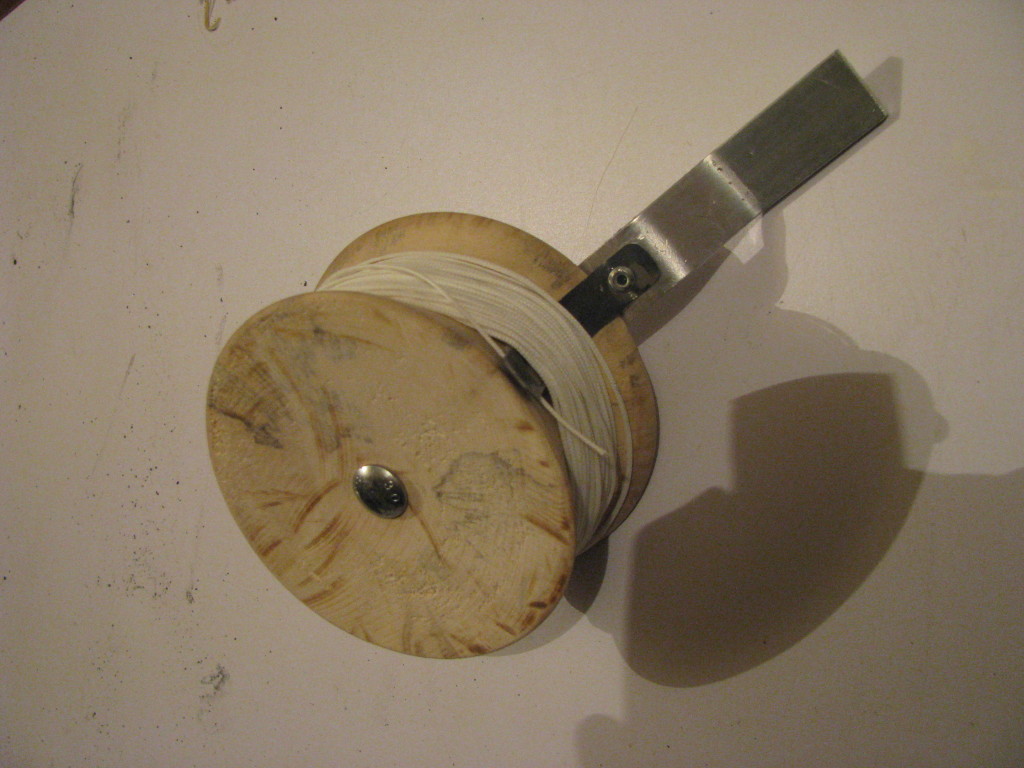
The two other popular types of bowfishing reels are either a spincast reel, similar to that is used in traditional fishing or a bottle type “retriever” system made by AMS and several others. All work well and it really comes down to personal preference. However, I did choose to outfit my little guys (ages 8 & 10) with the AMS bottle style retriever, because they won’t have to remember to push the button on the spin cast reel before shooting, eliminating the possibility of a snap-back so it seemed a little simpler and safer.
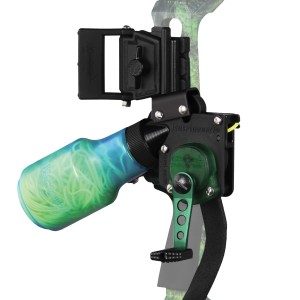
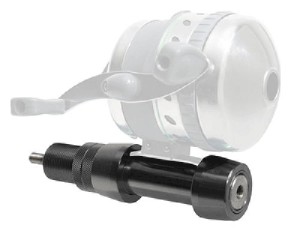
Arrows
The main distinction between arrows used for hunting or target practice, which are typically carbon or aluminum, is that bowfishing arrows are much heavier. These heavier arrows are essential so the arrow can penetrate into deeper water where a lighter weigh carbon arrow would not.
One detail I should cover is how the arrow is attached to the string. For years I tied my arrow directly to the string (and still do on occasion), however, this is discouraged as it creates a dangerous condition if the arrow is ever to snap back (see safety note above). The safety slide system keeps the line toward the front of the arrow, reducing the possibility on a snap-back.
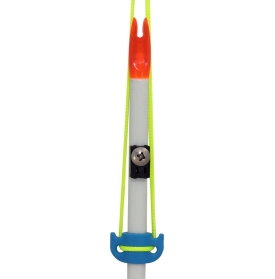
Packages
The great thing about the ever-growing popularity of the sport is that manufacturers are catering to bowfisherman like never before and there are many packages available that include everything needed to hit the water. My favorite thing about these packages are the bows that they’re including are designed with bowfishing in mind. The primary distinction between these bows and a traditional compound for big game is their adjustability both in both draw weight and draw length, allowing fast and easy customization for a variety of shooters. A couple in particular that I’d consider if new to the sport: AMS Fish Hawk and Mission Craze.
http://www.amsbowfishing.com/bows-reels/bowfishing-kits/fish-hawk-bow-kit.html
Bow Fishing- tactics
Much of the bowfishing season revolves around the spawn. All fish species spawn, but it’s those species which thrash about on the water’s surface which are most often targeted by bowfishermen. Spawning conditions for the common carp typically occur in our area around mid-May when water temperatures reach 64-74°F. Other factors which influence spawning are rising water levels and daylight hours. Many times spring flooding and runoff are associated with spawning activities as the shallow water warms more quickly than the surrounding waters. Carp almost always spawn in these shallow flooded areas quickly dirtying the waters by their spawning activities. It’s these dirty waters which make spotting carp so challenging, Many times carp will be in VERY shallow waters (12” plus or minus) but will not be visible because of the water clarity, the only reason you’ll know they’re there is you’ll see the reeds/weeds moving and big mud clouds when they spook. Often, you’ll only see a piece of a tail or fin, and have to anticipate where the body of the fish is before taking a shot.
Fish can either be stalked in these shallow waters, shot from the bank, or of course by silently sneaking along in a boat (see Bowfishing Boat Build). Either way will require some stealthyness in order to get within range as these fish are still very alert and wired to detect predators. It’s this mix of stalking that makes bowfishing feel more like hunting than fishing. Spotting carp is something of a learned art, similar to those who sight fish for Reds or Bonefish, it takes some practice to determine if that dark “blob” underwater is actually a fish and as I said before polarized sunglasses make a huge difference here!
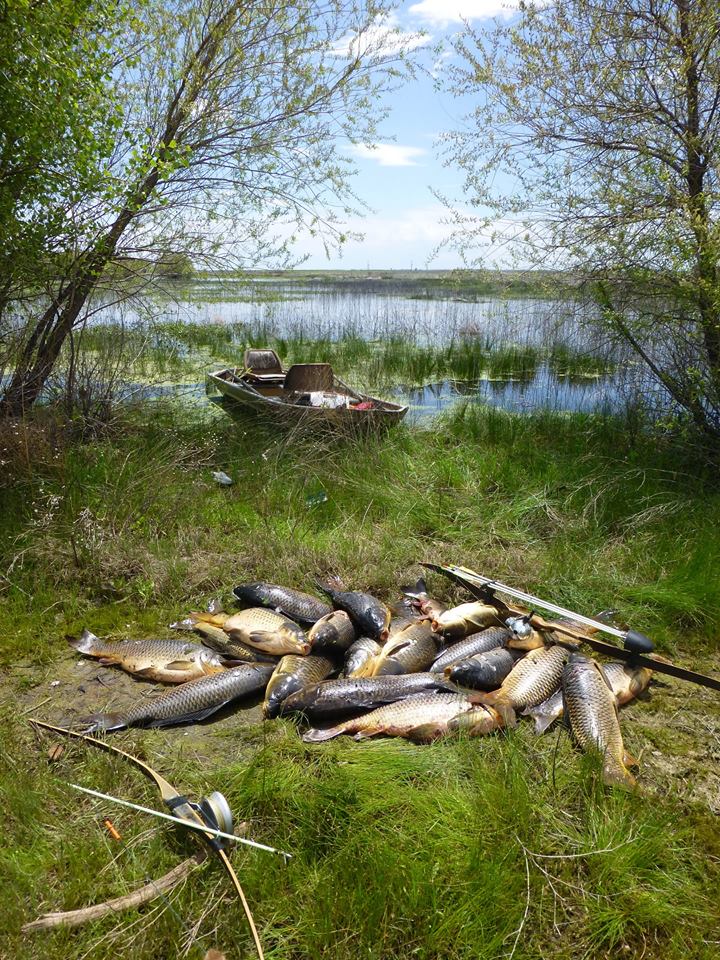
Aim low! Refraction or waters ability to “bend” light requires shooters to aim lower than it appears they should be aiming. When fish are rolling or boiling on the surface, aiming low is not necessary. However as fish are spotted in deeper water, it will be required. This is another unique aspect to bowfishing that can only be learned by experience, as both distance and the depth will affect how low one needs to aim. For fish 10-yrds away and several feet below the water’s surface I’d start by aiming about 6” below the belly of the fish, you’ll be able to watch your arrow either connect or go over/under the target. With practice you’ll begin to develop that sight picture in your mind and correct as necessary.
While many consider common bowfishing species trash fish and inedible, I’d encourage readers to give them a try for themselves before listening to those who may have never actually even eaten a carp before. They really can be quite good table fair. I’ve had them fried, smoked and pickled and they can be delicious. The one real complaint which is legitimate is the the “Y” bones which do make for a bonier fillet, but these can easily be worked around with the fillet knife or fillets can be scored every quarter inch if frying and the high temp oil will disintegrate the bones.
One point I should make, if you’re not utilizing the fish for the table and I understand many don’t (carp are an invasive species and that’s the main reason many people target them as they often negatively affect native fish populations) please take the proper steps to dispose of the fish properly. They make great garden fertilizer, or there may be an animal rescue in your area that will gladly accept the free food, but make sure not to leave them rotting on the bank for others to find.
Common items for a good day on the water
Polarized glasses
Bowfishing bow
Extra arrows
Leatherman or multitool
Bugspray
Sunscreen

Leave a Reply